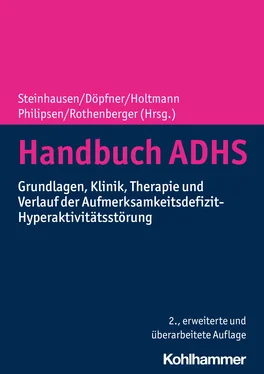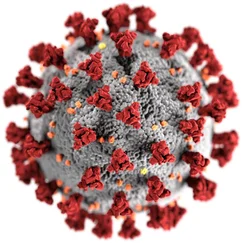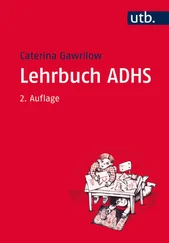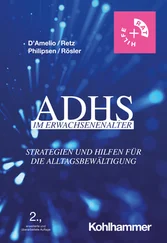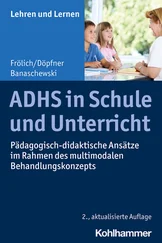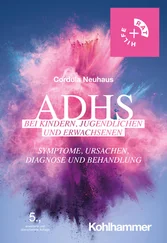Krause KH, Dresel SH et al. (2000). Increased striatal dopamine transporter in adult patients with attention deficit hyperactivity disorder: effects of methylphenidate as measured by single photon emission computed tomography. Neurosci Lett 285(2): 107–10.
Kusaga A, Yamashita Y et al. (2002). Increased urine phenylethylamine after methylphenidate treatment in children with ADHD. Ann Neurol 52(3): 372–4.
Laucht M, Skowronek M et al. (2007). Interacting effects of the dopamine transporter gene and psychosocial adversity on attention-deficit/hyperactivity disorder symptoms among 15-year-olds from a high-risk community sample. Arch Gen Psychiatry 64(5): 585–90.
Leo D, Sorrentino E et al. (2003). Altered midbrain dopaminergic neurotransmission during development in an animal model of ADHD. Neurosci Biobehav Rev 27(7): 661–9.
Leonard BE, McCartan D et al. (2004). Methylphenidate: a review of its neuropharmacological, neuropsychological and adverse clinical effects. Hum Psychopharmacol 19(3): 151–80.
Li D, Sham PC et al. (2006). Meta-analysis shows significant association between dopamine system genes and attention deficit hyperactivity disorder (ADHD). Hum Mol Genet 15(14): 2276–84.
Li J, Wang Y et al. (2007). Association between polymorphisms in serotonin transporter gene and attention deficit hyperactivity disorder in Chinese Han subjects. Am J Med Genet B Neuropsychiatr Genet 144B(1): 14–9.
Lucki I (1998). The spectrum of behaviors influenced by serotonin. Biol Psychiatry 44(3): 151–62.
Madras BK, Miller GM et al. (2005). The dopamine transporter and attention-deficit/hyperactivity disorder. Biol Psychiatry 57(11): 1397–409.
Malmberg K, Wargelius HL et al. (2008). ADHD and Disruptive Behavior scores – associations with MAO-A and 5-HTT genes and with platelet MAO-B activity in adolescents. BMC Psychiatry 8: 28.
Manzke T, Guenther U, Ponimaskin EG, Haller M, Dutschmann M, Schwarzacher S, Richter DW (2003). 5-HT4(a) receptors avert opioid-induced breathing depression without loss of analgesia. Science 301: 226–229.
Martin KF, Webb AR et al. (1987). The behavioural response to the 5-hydroxytryptamine1B (5HT1B) receptor agonist–RU-24969 may exhibit a circadian variation in the mouse. Chronobiol Int 4(4): 493–8.
Mazei MS, Pluto CP et al. (2002). Effects of catecholamine uptake blockers in the caudate-putamen and subregions of the medial prefrontal cortex of the rat. Brain Res 936(1–2): 58–67.
Mick E, Faraone SV (2008). Genetics of attention deficit hyperactivity disorder. Child Adolesc Psychiatr Clin N Am 17(2): 261–84, vii–viii.
Mill J, Sagvolden T et al. (2005). Sequence analysis of Drd2, Drd4, and Dat1 in SHR and WKY rat strains. Behav Brain Funct 1: 24.
Naaijen J, Forde NJ, Lythgoe DJ, Akkermans SE, Openeer TJ, Dietrich A, Zwiers MP, Hoekstra PJ, Buitelaar JK (2016). Fronto-striatal glutamate in children with Tourette`s disorder and attention-deficit/hyperactivity disorder. Neuroimage Clin 13: 16–23.
Neuman RJ, Lobos E et al. (2007). Prenatal smoking exposure and dopaminergic genotypes interact to cause a severe ADHD subtype. Biol Psychiatry 61(12): 1320–8.
O’Reilly RC, Frank MJ (2006). Making working memory work: a computational model of learning in the prefrontal cortex and basal ganglia. Neural Comput 18(2): 283–328.
Oades RD (2002). Dopamine may be ›hyper‹ with respect to noradrenaline metabolism, but ›hypo‹ with respect to serotonin metabolism in children with attention-deficit hyperactivity disorder. Behav Brain Res 130(1–2): 97–102.
Oades RD (2005). The Roles of Norepinephrine and Serotonin in Attenion Deficit Hyperactivity Disorder. In: Gozal D, Molfese DL (Eds.). Attention Deficit Hyperactivity Disorder: From Genes to Patients. Totowa, NJ: Humana Press. S. 97–130.
Oades RD (2006). Function and dysfunction of monamine interactions in children and adolescents with AD/HD. In: Levin ED (Ed.). Neurotransmitter Interactions and Cognitive Function. Basel: Birkhäuser. S. 207–244.
Oades RD (2007). Role of the serotonin system in ADHD: treatment implications. Expert Rev Neurother 7(10): 1357–74.
Oades RD, Muller B (1997). The development of conditioned blocking and monoamine metabolism in children with attention-deficit-hyperactivity disorder or complex tics and healthy controls: an exploratory analysis. Behav Brain Res 88(1): 95–102.
Oades RD, Daniels R et al. (1998). Plasma neuropeptide-Y levels, monoamine metabolism, electrolyte excretion and drinking behavior in children with attention-deficit hyperactivity disorder. Psychiatry Res 80(2): 177–86.
Ogdie MN, Bakker SC et al. (2006). Pooled genome-wide linkage data on 424 ADHD ASPs suggests genetic heterogeneity and a common risk locus at 5p13. Mol Psychiatry 11(1): 5–8.
Palsson E, Sellgren C, Rydén E, Kizza R, Pelanis A, Zetterberg H, Blennow K, Landén Mikael (2017). Cerebrospinal fluid monoamine metabolite profiles in bipolar disorder, ADHD and controls. J Neural Transm 124: 1135–1143.
Pliszka SR (2005). The neuropsychopharmacology of attention-deficit/hyperactivity disorder. Biol Psychiatry 57(11): 1385–90.
Prince J (2008). Catecholamine Dysfunction in Attention-Deficit/Hyperactivity Disorder. J Clin Psychopharmacol 28 (Suppl. 2): 39–45.
Rajkowski J, Majczynski H, Clayton E, Aston-Jones GS (2004). Activation of monkey locus coeruleus neurons varies with difficulty and performance in a target detection task. J Neurophysiol 92: 361–371.
Rapoport J, Quinn P et al. (1974). Platelet serotonin of hyperactive school age boys. Br J Psychiatry 125(2): 138–40.
Reimherr FW, Wender PH et al. (1984). Cerebrospinal fluid homovanillic acid and 5-hydroxy-indoleacetic acid in adults with attention deficit disorder, residual type. Psychiatry Res 11(1): 71–8.
Retz W, Freitag CM et al. (2008). A functional serotonin transporter promoter gene polymorphism increases ADHD symptoms in delinquents: interaction with adverse childhood environment. Psychiatry Res 158(2): 123–31.
Riikonen RS, Nokelainen P et al. (2005). Deep serotonergic and dopaminergic structures in fetal alcoholic syndrome: a study with nor-beta-CIT-single-photon emission computed tomography and magnetic resonance imaging volumetry. Biol Psychiatry 57(12): 1565–72.
Roessner V, Walitza S et al. (2007). Tetrahydroisoquinoline derivatives: a new perspective on monoaminergic dysfunction in children with ADHD? Behav Brain Funct 3(1): 64.
Roessner V, Manzke T et al. (2009a). Development of 5-HT transporter density and long-term effects of methylphenidate in an animal model of ADHD. World J Biol Psychiatry 26(1):1–5.
Roessner V, Sagvolden T et al. (2009a). MPH treatment normalizes elevated dopamine transporter density in an animal model of ADHD (submitted).
Ruskin DN, Bergstrom DA et al. (2001). Drugs used in the treatment of attention-deficit/hyperactivity disorder affect postsynaptic firing rate and oscillation without preferential dopamine autoreceptor action. Biol Psychiatry 49(4): 340–50.
Russell VA (2002). Hypodopaminergic and hypernoradrenergic activity in prefrontal cortex slices of an animal model for attention-deficit hyperactivity disorder– the spontaneously hypertensive rat. Behav Brain Res 130(1–2): 191–6.
Russell VA, Sagvolden T et al. (2005). Animal models of attention-deficit hyperactivity disorder. Behav Brain Funct 1: 9.
Sagvolden T, Johansen EB et al. (2005). A dynamic developmental theory of attention-deficit/hyperactivity disorder (ADHD) predominantly hyperactive/impulsive and combined subtypes. Behav Brain Sci 28(3): 397–419; discussion 419–68.
Schiffer WK, Volkow ND et al. (2006). Therapeutic doses of amphetamine or methylphenidate differentially increase synaptic and extracellular dopamine. Synapse 59(4): 243–51.
Читать дальше
